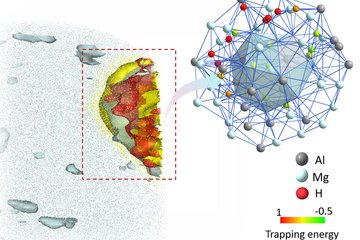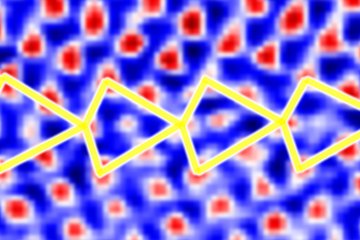All genres
1061.
Talk
Simulation tools for ab initio steel design. CM Special Workshop on "Ab initio Description of Iron, Steel and Related Materials", MPIE, Düsseldorf, Germany (2009)
1062.
Talk
Wasserstoff in X-IP Stahl (ab initio): Einfluss von Defekten auf die Energetik und Dynamik von Wasserstoff in Manganstählen. X-IP Workshop, Dortmund, Germany (2009)
1063.
Talk
Ab initio study of calcite substituted by Mg and P. Multiscale design modeling 2009, Brno, Czech Republic (2009)
1064.
Talk
Extremal stiffness of crustacean cuticle through hierarchical optimization: Theory, modeling, and experiment. 3rd International Conference on Mechanics of Biomaterials & Tissues, multiscale modeling of tissue mechanical properties, Clearwater Beach, FL, USA (2009)
1065.
Talk
Ab initio Determined Fundamental Materials-design Limits in Mg–Li–X (X = Al, Si, Zn, Ca, Cu) Ternaries. Materials Research Society (MRS) meeting, Boston, MA, USA (2009)
1066.
Talk
Ab Initio Interfacial Austenite/Martensite Energies for Accurate Stacking Fault Energy Calculations in High-Mn Steels. Materials Research Society 2010 Fall Meeting, Boston, MA, USA (2009)
1067.
Talk
Theory of defect distribution at semiconductor interfaces based on ab-initio thermodynamics. MRS Fall Meeting, Boston, MA, USA (2009)
1068.
Talk
Calculation of defect distribution at interfaces from ab-initio-based thermodynamic data. MRS Fall Meeting, Boston, MA, USA (2009)
1069.
Talk
Theory-guided Design of Bone-matched Ti-based Multi-phase Biomaterials. Materials Research Society (MRS) meeting, Boston, MA, USA (2009)
1070.
Talk
Ab initio up to the melting point: Anharmonicity and vacancies in aluminum. MRS Fall Meeting, Boston, MA, USA (2009)
1071.
Talk
An atomistic study of martensitic phases in dilute Fe-based solid solutions. MRS Fall Meeting, Boston, MA, USA (2009)
1072.
Talk
Understanding embrittlement in metals: A multiscale study of the Hydrogen-enhanced local plasticity mechanism. Materials Research Society (MRS) Fall meeting, Boston, MA, USA (2009)
1073.
Talk
Polarization-induced charge carrier separation in realistic polar and nonpolar grown GaN quantum dots. Collaborative Conference on Interacting Nanostructures CCIN'09, San Diego, CA, USA (2009)
1074.
Talk
First-principles based multi-scale approaches to the elasticity of metallic polycrystals and hierarchical bio-composites. AICES meets MPIE workshop, Monschau, Germany (2009)
1075.
Talk
Highly p-doped GaN:Mg! What hinders the thermal drive-out of hydrogen? 2. Klausurtagung des Graduierten Kollegs: Mikro und Nanostrukturen in der Optoelektronik, Bad Karlshafen, Germany (2009)
1076.
Talk
Crustacean skeletal elements: Variations in the constructional morphology at different hierarchical levels. Seminar talk at Masaryk University, Brno, Czech Republic (2009)
1077.
Talk
Ab initio investigation of temperature dependent effects in magnetic shape memory Heusler alloys. SPP1239 Fokustreffen A "Fundamentals", Bonn, Germany (2009)
1078.
Talk
Ab Initio Determined Materials-Design Limits in Ultra Light-Weight Mg-Li Alloys. 8th International Conference on Magnesium Alloys and their Applications, Weimar, Germany (2009)
1079.
Talk
Adatom Kinetics, Thermodynamics, and Si Incorporation on Non-Polar III-Nitride Surfaces: Implications on Nanowire Growth. 8th nternational Conference on Nitride Semiconductors, Jeju Island, South Korea (2009)
1080.
Talk
Quantum mechanically based modeling of temperature driven materials phenomena. Colloquium "Material Science on Supercomputers", MPIE, Düsseldorf, Germany (2009)











